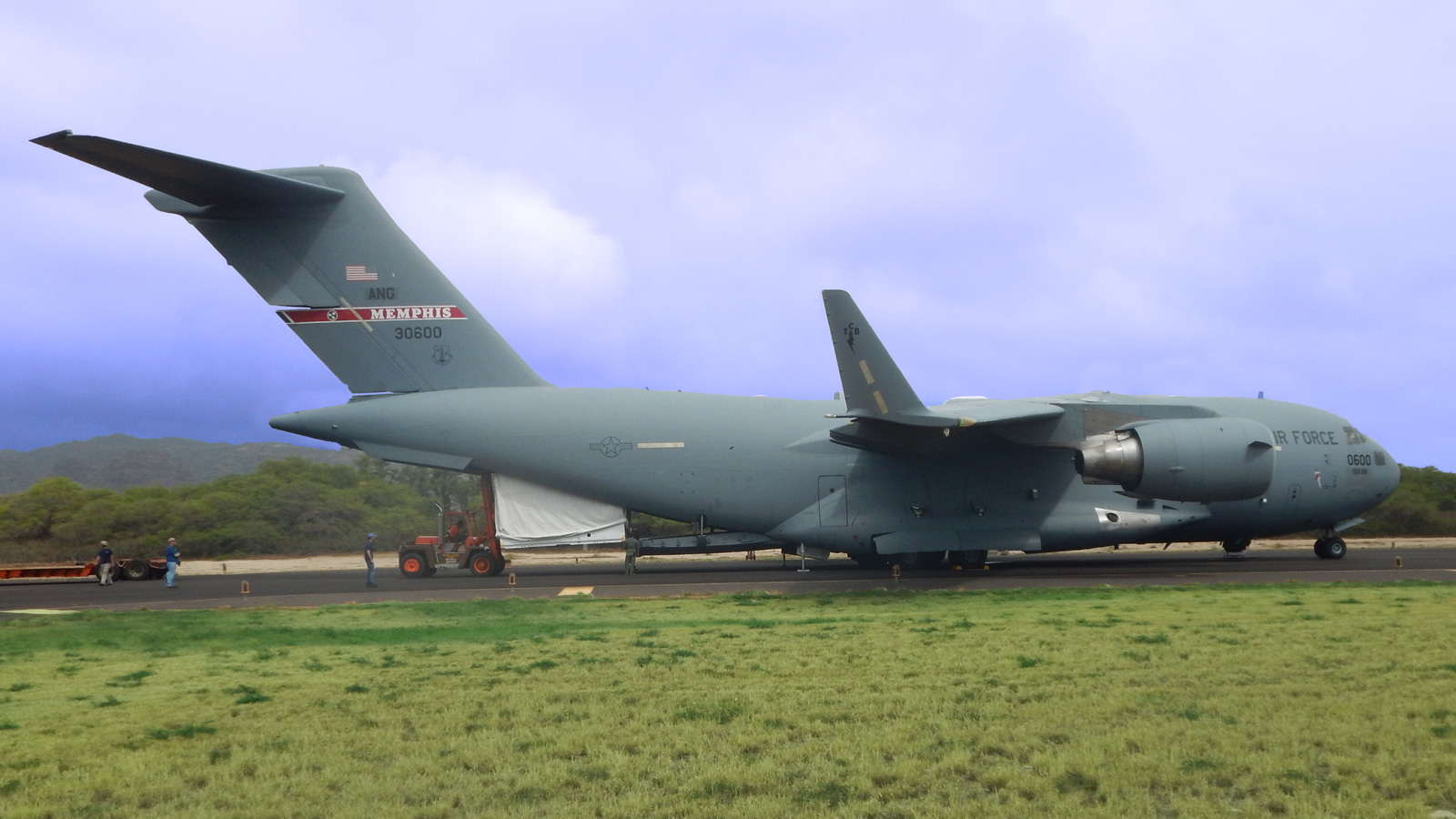The second test vehicle for NASA’s Low-Density Supersonic Decelerator project arrived April 25 at the U.S. Navy’s Pacific Missile Range Facility in Kauai, Hawaii. The vehicle now will undergo final assembly and weeks of testing prior to its scheduled experimental flight set for early June. The flight will test two cutting-edge technologies for braking Mars spacecraft.
During last year’s test, the supersonic inflatable aerodynamic decelerator (SIAD-R), worked flawlessly. The largest supersonic parachute ever flown, however, did not perform as planned. The test did deliver the first-ever high-speed video of supersonic parachute inflation dynamics. This data aided in numerous improvements that have been made to this year’s chute – which will be the primary focus of this summer’s test.
“Whenever the team members start saying ‘aloha’ to each other, we know we’re getting close to flying,” said Mark Adler, project manager for the Low-Density Supersonic Decelerator at NASA’s Jet Propulsion Laboratory in Pasadena, California. “Last summer’s test flight was a great success, proving the soundness of our vehicle design and giving us an early glimpse at our two braking technologies — one year ahead of schedule,” Adler said. “This year we’re looking forward to seeing how our new parachute behaves in a supersonic environment at the edge of space.”
The upper layers of Earth’s stratosphere are a proxy for the thin atmosphere of Mars. The June 2015 experimental flight test of LDSD will begin when a balloon carrying the test vehicle lifts off from the Navy facility. The balloon will carry the vehicle over the Pacific to an altitude of about 120,000 feet (37,000 meters). It will be dropped and its booster rocket will kick in, carrying it to 180,000 feet (55,000 meters) and accelerating it to Mach 4.
Once in the very rarefied air high above the Pacific, the vehicle will begin a series of automated tests of the two braking technologies. The SIAD-R — essentially an inflatable doughnut that increases the vehicle’s size and, as a result, its drag — will be deployed at about Mach 3. It will quickly slow the vehicle to Mach 2.43. At that point, the parachute will deploy. About 45 minutes later, the saucer-shaped vehicle is expected to make a controlled landing in the ocean off the coast of Hawaii.
The LDSD crosscutting demonstration mission will test breakthrough technologies that will enable large payloads to be safely landed on the surface of Mars, and also will allow access to more of the planet’s surface by enabling landings at higher-altitude sites. As NASA plans ambitious robotic science missions to Mars, laying the groundwork for even more complex human expeditions to come, the spacecraft needed to land safely on the Red Planet’s surface will become larger and heavier in order to accommodate explorers’ extended stays on the Martian surface.
The LDSD test vehicle was shipped to the Navy facility aboard a U.S. Air Force C-17 cargo plane. The first launch period in which the test vehicle can fly is June 2-12.
NASA’s Space Technology Mission Directorate in Washington funds the LDSD mission, a cooperative effort led by the Jet Propulsion Laboratory in Pasadena, California. The Technology Demonstration Mission program at NASA’s Marshall Space Flight Center in Huntsville, Alabama, manages LDSD. NASA’s Wallops Flight Facility on Wallops Island, Virginia, is coordinating support with the Pacific Missile Range Facility and provides the balloon systems for the LDSD test.
For more updates about the test flight and more information about the LDSD project, visit:
For more information about the Space Technology Mission Directorate, visit:
https://www.nasa.gov/spacetech
DC Agle
Jet Propulsion Laboratory, Pasadena, California
818-393-9011
agle@jpl.nasa.gov
Kim Newton
Marshall Space Flight Center, Huntsville, Alabama
256-544-0371
Kimberly.d.newton@nasa.gov
2015-146
























